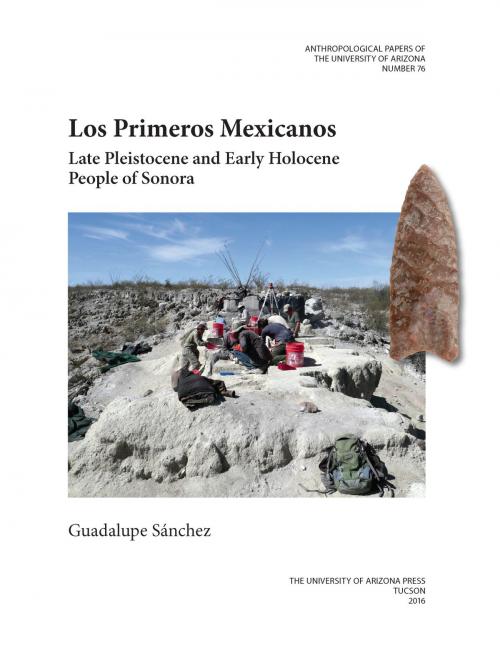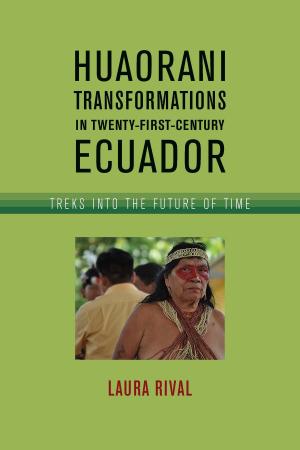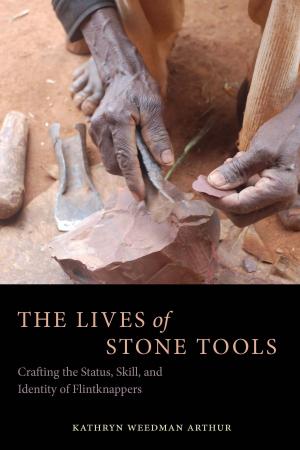Los Primeros Mexicanos
Late Pleistocene and Early Holocene People of Sonora
Nonfiction, Social & Cultural Studies, Social Science, Archaeology| Author: | Guadalupe Sánchez | ISBN: | 9780816533756 |
| Publisher: | University of Arizona Press | Publication: | May 12, 2016 |
| Imprint: | University of Arizona Press | Language: | English |
| Author: | Guadalupe Sánchez |
| ISBN: | 9780816533756 |
| Publisher: | University of Arizona Press |
| Publication: | May 12, 2016 |
| Imprint: | University of Arizona Press |
| Language: | English |
In 1927, near the town of Folsom, New Mexico, a spectacular discovery altered our understanding of early humans on the American continent. Scientists excavating a bison from the late Pleistocene age discovered a fluted projectile point wedged between the animal’s ribs—forceful evidence that humans existed during the Ice Age together with now-extinct animals. Subsequent discoveries at nearby Clovis introduced scientists to the first large-scale occupation of the Americas—Clovis culture—with a time span of 13,250 to 12,500 years ago.
Los Primeros Mexicanos explores the Clovis occupation of Mexico’s northwest region of Sonora. Using extensive primary data concerning specific artifacts, assemblages, and Paleoindian archaeology, Mexican archaeologist Guadalupe Sánchez presents a synopsis and critical review of current data and a unique summary of information about the First People of México that is difficult to find in Spanish and until now not available in English.
Sánchez’s essential framework for early Sonora prehistory includes the Sonoran landscape, the biotic communities, a history of investigations, the regional cultural-historical chronology of Sonora, and the Clovis record in the surrounding area. The Sonoran settlement pattern, she asserts, indicates that Clovis groups were hunter-gatherers who exploited a wide range of environments, locating their settlements near lithic sources for tool-making, water sources, large-prey animals, and a variety of edible plants and small animals.
In 1592, a Jesuit priest, José de Acosta, chronicled his puzzlement over when man first arrived in the New World. Four hundred years later, the peopling of the American continent is still intensely interesting to scientists and researchers. Los Primeros Mexicanos offers an exhaustive synthesis of available archaeological evidence to shed light on Clovis occupation in Sonora, Mexico.
In 1927, near the town of Folsom, New Mexico, a spectacular discovery altered our understanding of early humans on the American continent. Scientists excavating a bison from the late Pleistocene age discovered a fluted projectile point wedged between the animal’s ribs—forceful evidence that humans existed during the Ice Age together with now-extinct animals. Subsequent discoveries at nearby Clovis introduced scientists to the first large-scale occupation of the Americas—Clovis culture—with a time span of 13,250 to 12,500 years ago.
Los Primeros Mexicanos explores the Clovis occupation of Mexico’s northwest region of Sonora. Using extensive primary data concerning specific artifacts, assemblages, and Paleoindian archaeology, Mexican archaeologist Guadalupe Sánchez presents a synopsis and critical review of current data and a unique summary of information about the First People of México that is difficult to find in Spanish and until now not available in English.
Sánchez’s essential framework for early Sonora prehistory includes the Sonoran landscape, the biotic communities, a history of investigations, the regional cultural-historical chronology of Sonora, and the Clovis record in the surrounding area. The Sonoran settlement pattern, she asserts, indicates that Clovis groups were hunter-gatherers who exploited a wide range of environments, locating their settlements near lithic sources for tool-making, water sources, large-prey animals, and a variety of edible plants and small animals.
In 1592, a Jesuit priest, José de Acosta, chronicled his puzzlement over when man first arrived in the New World. Four hundred years later, the peopling of the American continent is still intensely interesting to scientists and researchers. Los Primeros Mexicanos offers an exhaustive synthesis of available archaeological evidence to shed light on Clovis occupation in Sonora, Mexico.















